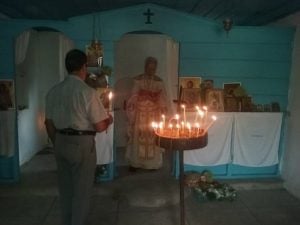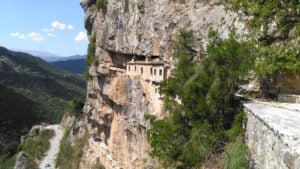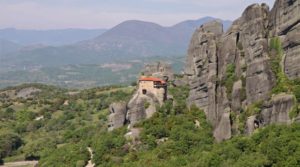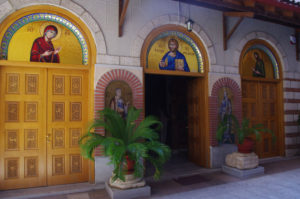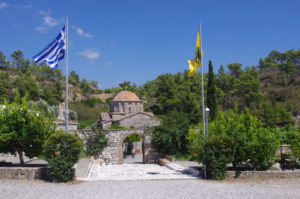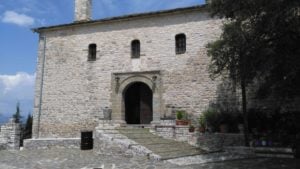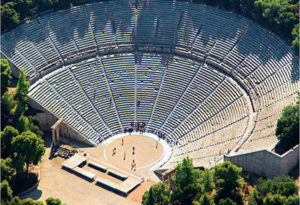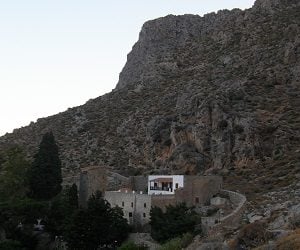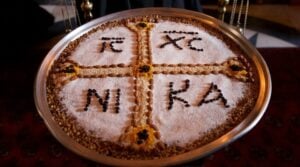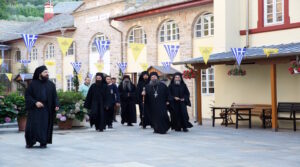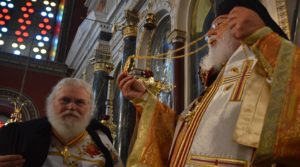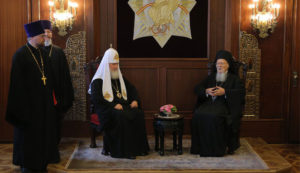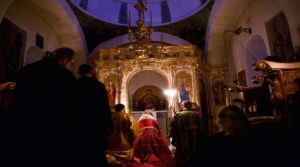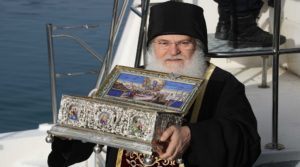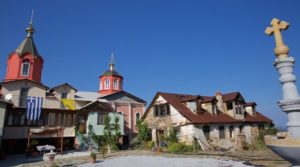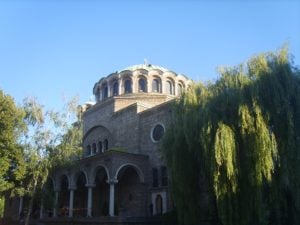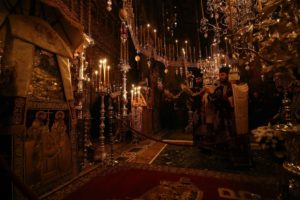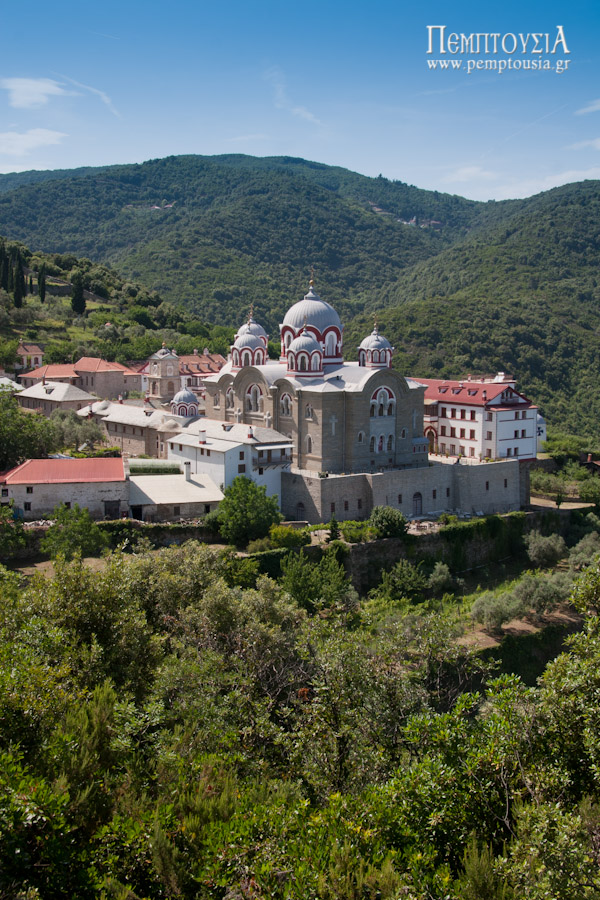
Founded in 1759 by the Russian monk Paisij Veilichkovskij. Shortly afterwards, large buildings were constructed and the magnificent central church. Outstanding among the treasures kept there are an exquisite ciborium, crosses, vestments and so on. The Skete is a dependency of the Holy Monastery of Pantokrator.
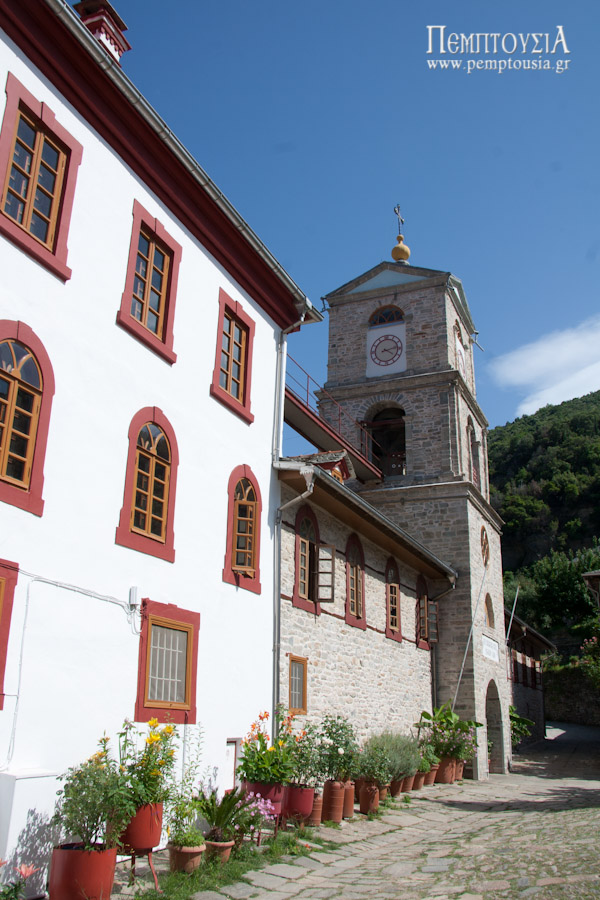
It appears as a kelli in the 15th century, or perhaps even earlier. In 1492, Vlad III made an annual grant of 1,000 silver coins. Shortly afterwards, the First Supervisor, Kosmas, from the Monastery of Hilandar, withdrew here. In 1759 the Russian niptic father Paisij Velichkovskij (1722-94) settled here with his disciples, 35 in all, and transformed it into a new kind of skete.
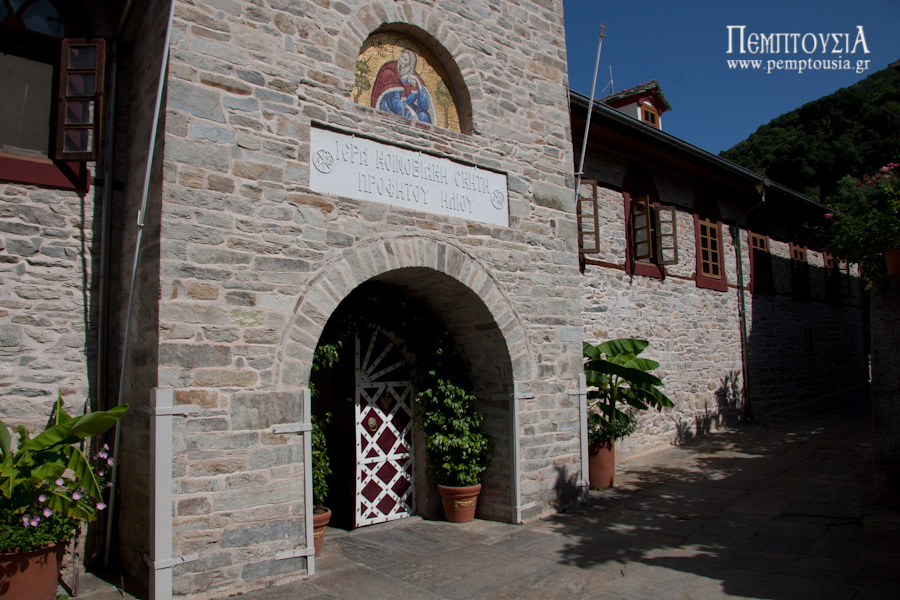
The main entrance to the Skete.
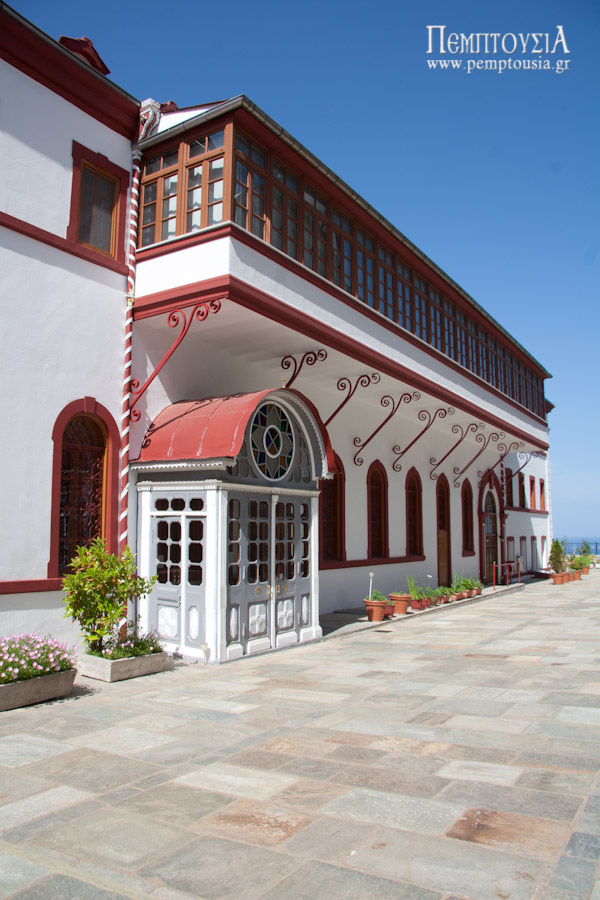
Earlier, the Skete had a machine shop, a hospital, a photography studio, a large library, a steam-driven mill and a sailing boat of 350 tonnes. It had dependencies in Odessa, Constantinople and elsewhere. In the 1910s, there were 500 monks there.
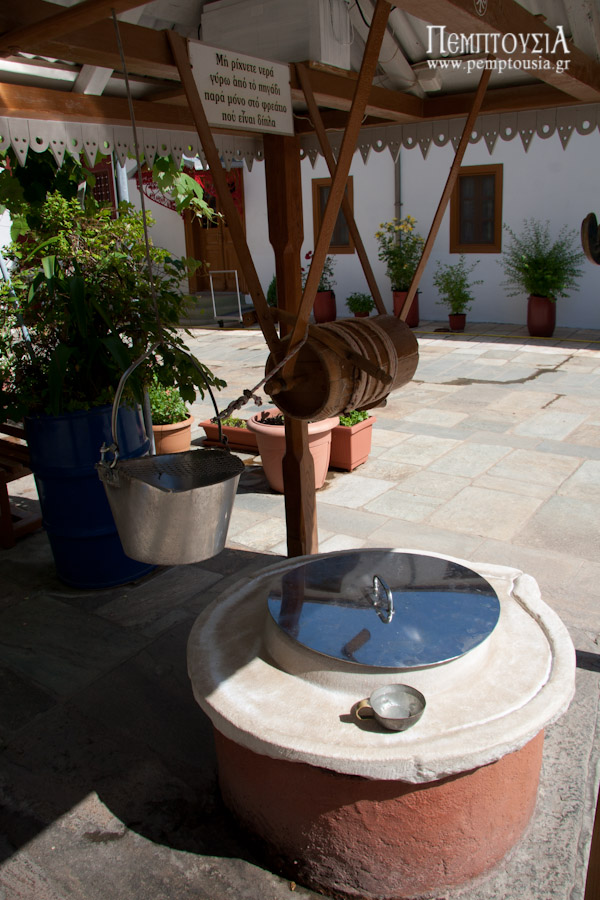
In the wings of the Skete of the Prophet Elijah, which are built in the four-sided shape, there are the refectory, the kitchen, the bakery, the guest reception room and accommodations, the great hall, the Supervisor’s office, the cells for the monks, the library, various auxiliary and storage spaces, an iconography studio and a workshop for the conservation of icons, as well as chapels.
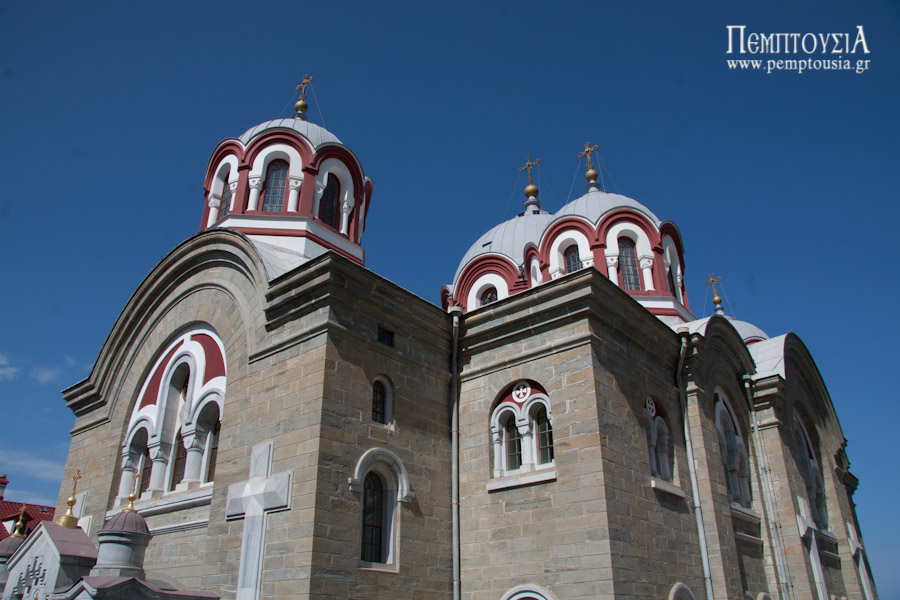
Until 1903, the Skete enjoyed the unstinting moral and material support of the Tsars of Russia, which led to the construction of an impressive building complex and an enormous church. Once the Communists came to power in the Soviet Union, however, and the flow of funds and monks from Russia and the Ukraine ceased, the Skete saw a steep decline.
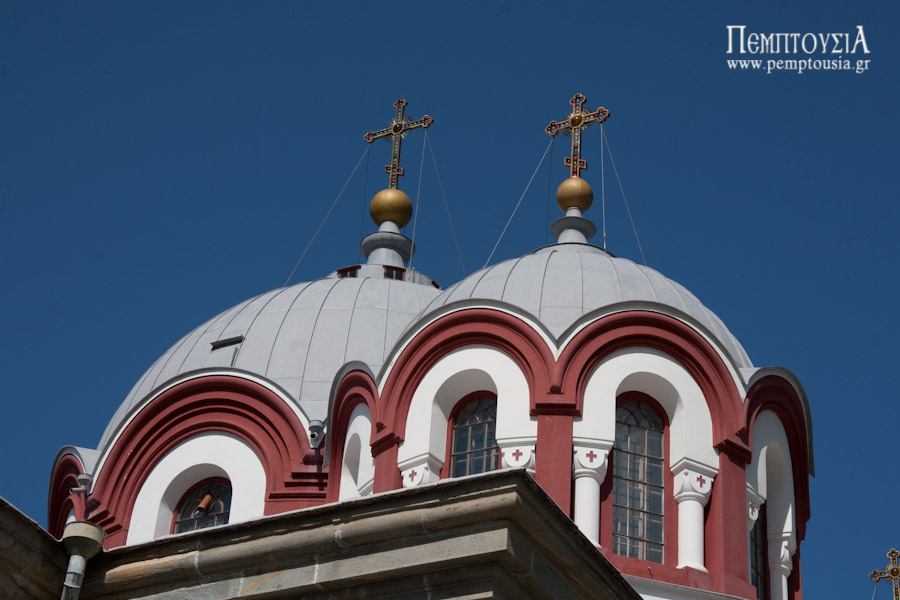
From 1917 onwards, to the year 1972, the ravages of time and the disappearance of many treasures marked inspiritual and physical desolation and its almost ruined condition. With the consent of the Monastery of Pantokrator, to which the Skete is subject, today’s active Greek brotherhood settled in, and a new, vibrant period of progress began, which is continuing in all areas and is very obvious.
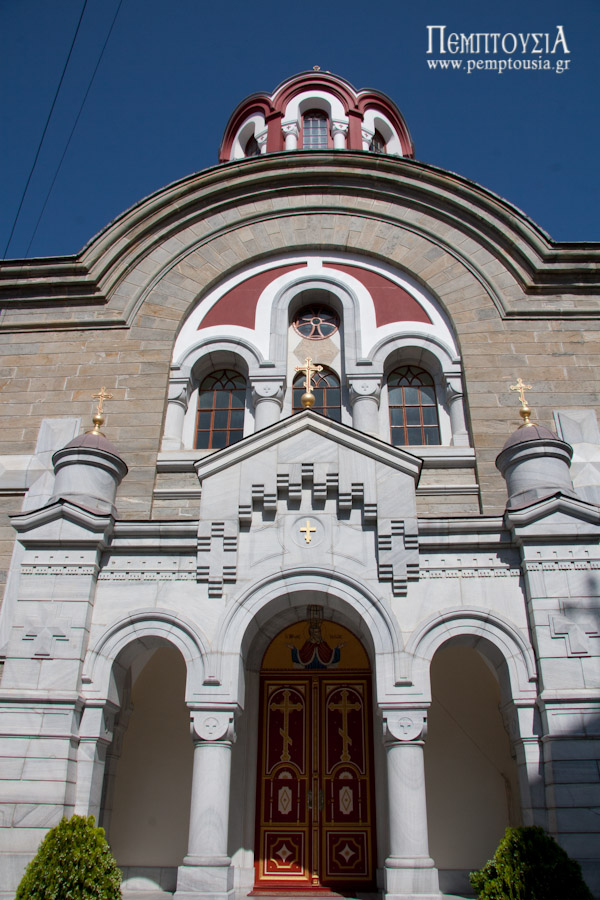
The katholiko (main church) was completed in 1903. It is dedicated to the Prophet Elijah, Saint Alexandra and the Apostle Andrew. It is richly decorated on the inside, but without wall-paintings.
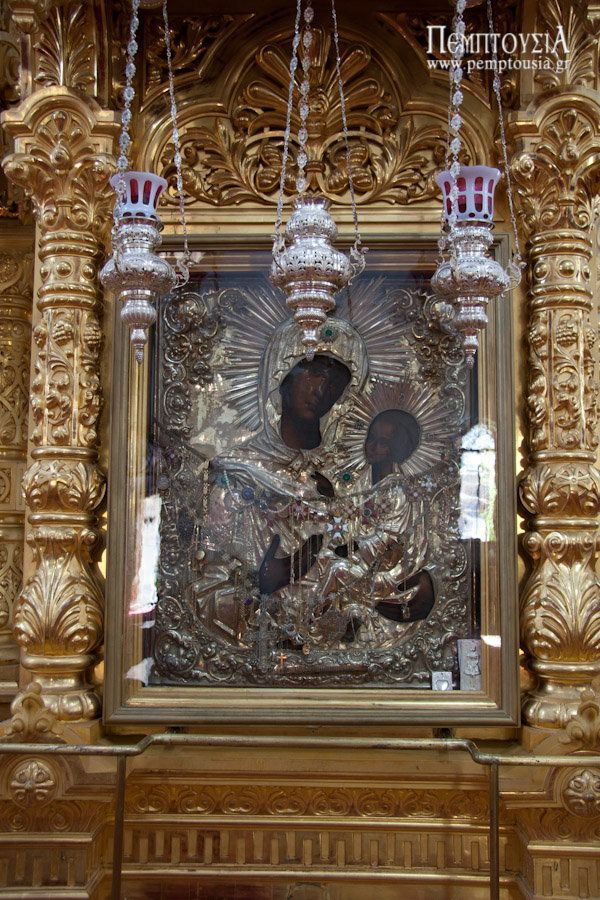
Two wonder-working icons are the main entreaty of the Skete: The Mother of God Suckling and the Mother of God Shedding Tears.
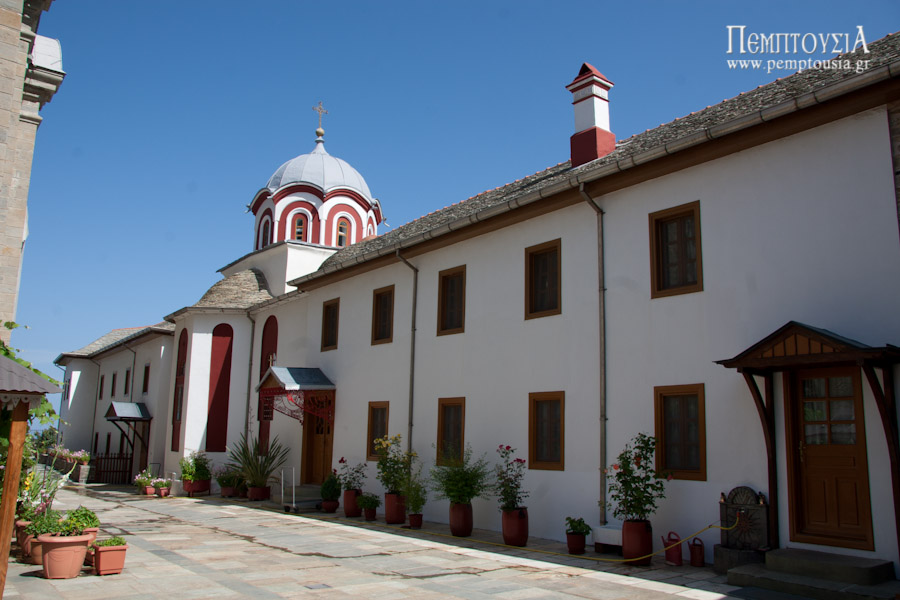
There are three other chapels in the Skete, dedicated to Saint Mitrofan and the Holy Forefathers, to Saint Nicholas, Bishop of Myra in Lycia and to the Annunciation of the Mother of God.
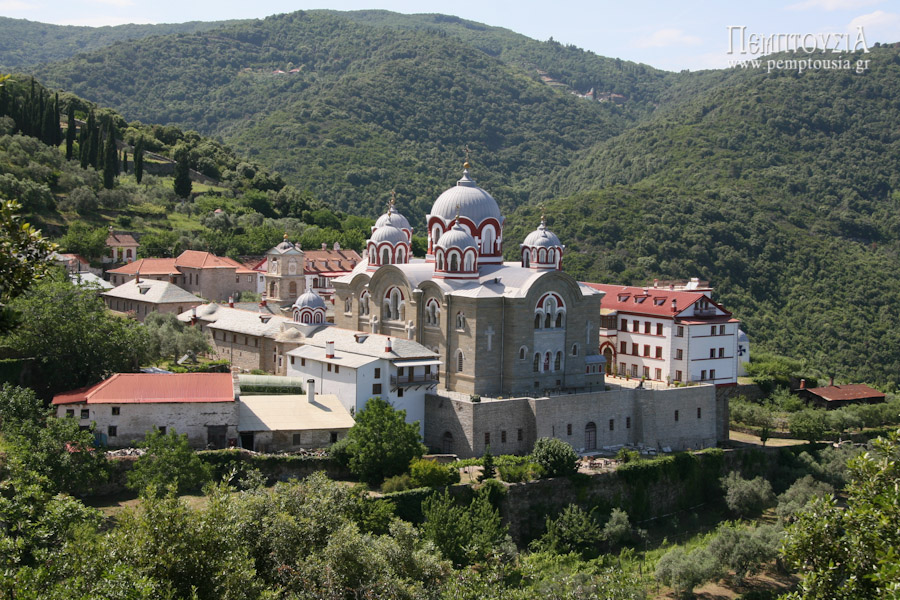
The Skete of the Prophet Elijah lies to the west of the main monastery, forty minutes away from it and at a height of 140 m. The site is shaped like an amphitheatre and has a view of the sea.


